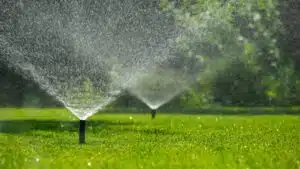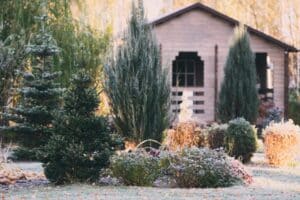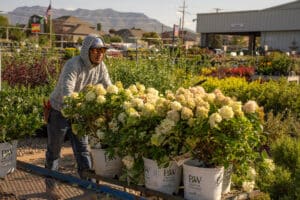Walking into a garden center can feel overwhelming. Rows upon rows of plants line the shelves, each one promising to transform your outdoor space into something beautiful. But not all plants are created equal, and knowing how to identify healthy specimens can mean the difference between a thriving garden and disappointment down the road.
At J&J Nursery and Garden Center in Layton, UT, we believe educated customers make the best plant parents. That’s why we’re sharing our insider knowledge on spotting healthy plant signs and avoiding common pitfalls that can plague your gardening efforts.
Start From the Ground Up: Examining the Roots
The root system is the foundation of any healthy plant, yet it’s often the most overlooked aspect during selection. When possible, gently lift the plant from its container to inspect the roots. Healthy roots should appear white or light-colored, firm to the touch, and spread throughout the soil without being overly crowded.
Watch out for roots that circle around the bottom of the pot—a condition called being “root bound.” While this isn’t always a death sentence, severely root-bound plants may struggle to establish themselves in your garden. Dark, mushy, or foul-smelling roots indicate root rot and should be avoided entirely.
Some plants may have roots poking through drainage holes, which can be normal for actively growing specimens. However, if the roots appear dried out or damaged, consider choosing a different plant.
Foliage Tells the Story: Reading the Leaves
Healthy plant signs are often most visible in the foliage. Look for leaves that display vibrant, consistent coloring appropriate for the species. The leaves should feel firm and show no signs of wilting, yellowing, or browning—unless this is normal seasonal behavior for that particular plant.
Pay attention to leaf shape and size consistency. Leaves that appear stunted, distorted, or unusually small compared to others on the same plant may indicate stress or disease. Similarly, excessive leaf drop or branches with sparse foliage can signal underlying health issues.
New growth is another positive indicator. Fresh shoots, buds, or emerging leaves suggest the plant is actively growing and likely to continue thriving once transplanted to your garden.
Spotting Trouble: Pest and Disease Warning Signs
Even the most reputable garden centers can occasionally harbor plants with pest or disease issues. Learning to identify these problems early can save you from introducing unwanted visitors to your garden.
Common pest indicators include tiny holes in leaves, sticky honeydew on foliage, visible insects on stems or leaf undersides, and webbing between branches. Aphids, spider mites, and scale insects are frequent culprits that can quickly spread to other plants.
Disease symptoms often manifest as unusual spots, patches, or discoloration on leaves and stems. Powdery white coatings, black or brown spots, and areas of decay should raise red flags. Fungal issues can be particularly problematic, as they often worsen after planting and can affect surrounding plants.
Don’t forget to check the soil surface. Mushrooms or fungus growing in the potting mix, along with a sour or unpleasant odor, can indicate poor drainage or contaminated soil.
Structural Integrity and Growth Patterns
A plant’s overall structure provides valuable clues about its health and future potential. Look for specimens with strong, well-balanced branching patterns and sturdy stems that can support the plant’s weight.
Avoid plants with broken branches, damaged bark, or wounds that haven’t healed properly. These openings can become entry points for diseases and pests. Similarly, plants that appear top-heavy or have an unbalanced growth pattern may struggle to establish properly in your landscape.
For flowering plants, check that buds appear healthy and plump rather than dried or shriveled. While plants in full bloom might be tempting, those with healthy buds often transplant better and provide longer-lasting enjoyment.
The J&J Difference: Quality Assurance You Can Trust
At J&J Nursery and Garden Center, we take plant health seriously. Our experienced team regularly inspects our inventory, removing any specimens showing signs of stress, disease, or pest problems before they reach our sales floors. We maintain optimal growing conditions and follow strict protocols to ensure every plant meets our high standards.
Our knowledgeable staff can help you identify healthy plant signs specific to the varieties you’re considering. We’re always happy to explain what to look for and can even show you examples of healthy versus problematic specimens when questions arise.
Making Smart Choices for Long-Term Success
Armed with knowledge about healthy plant signs, you can shop with confidence at any garden center. Remember that investing time in selection pays dividends later—a healthy plant from the start will establish faster, require less intervention, and provide years of enjoyment.
Take your time, ask questions, and don’t hesitate to examine plants thoroughly before purchasing. Your garden—and your wallet—will thank you for making informed decisions that set the stage for gardening success. Contact us today to learn more about how to choose the perfect plants for your garden!



